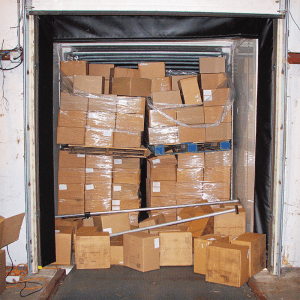REDWOOD LOGIN
Redwood PortalLTL
SCS
SCS Support
Rockfarm
Transporting freight is part of your business. But, to ship goods successfully and keep your customers happy you need to protect them from freight damage. Freight damage is not only a pain for you, but can cause significant losses to your company.
The most noticeable loss to companies dealing with freight damage is that often you do not get the full amount of the damage refunded to you. And, if you are experiencing damage regularly, this could also increase your insurance rates. But, most importantly, it can damage relationships with your customers, which hurts long-term profits and growth in addition to the short-term hits.
So, what can you do to ensure that you protect your freight from costly damage? Let’s look at the best practices to avoid freight damage.

Packaging is the first, foundational step of shipping. It’s generally the smallest cost in your supply chain, but it can have a major impact. Skimping on packaging can have a detrimental effect on your more expensive costs, like warehousing, shipping, and loss prevention.
It’s important to choose the right packaging material and correct size. It should be large enough to hold the contents, with additional necessary impact protection. You also want packaging that is uniform and consistent throughout your business, so it is easy to load and stack on pallets.
Never use packaging with dents, holes, tears, or water damage. A damaged box almost always means damaged contents. Also, don’t exceed the maximum weight per package. You can usually find this weight printed on the box maker’s certificate.
It’s also important to pair packages with the correct pallet size. Try to match the dimensions so that stacking and movement don’t damage the boxes.
Oftentimes, the package alone isn’t strong enough to fully protect the contents inside. Even a slight misstep where the box hits something or is stacked incorrectly can mean damaging the entire contents. Impact protection keeps the goods safeguarded, despite any mishaps on transit. This is especially important when working with fragile goods or liquids.
Styrofoam has been a packaging go to for many years but can be extremely harmful to the environment. For a greener shipping experience, we recommend paper, cardboard, bubble wrap, biodegradable plastics or even items made from cornstarch.
Incorrectly sealing packages is one of the top reasons for damaged goods. Seal with strong tape that is at least two inches in width. We recommend pressure-sensitive plastic, water-activated paper tape, or water-activated reinforced tape. These are strong and durable and will hold up against potential spills and water exposure. We don’t advise using cellophane tape, masking tape, or string, which break and rip easily.

There’s an art to loading a trailer. Stacking should be uniform and stable, where weight is distributed evenly on pallets. Always stack one “tower” with the pallets or packages of the same dimensions. Every three layers should have a sheet of cardboard or reinforcement to help distribute weight and prevent downward-pull breakage, where contents are crushed due to the gravity of stacked boxes.
Pallets and packages should be packed close together since empty space between cartons can lead to shifting and breakage. Lighter cargo should be stacked on top of heavier cargo, and dry goods on top of the liquid to prevent additional damage from leaking.
The way to ensure you are loading your trailer properly is to clearly label all of your packages. You should use as few labels as possible to avoid confusion, and they should be bright and easy to identify. You want to label the weight, the type of contents (fragile, liquid, heavy, flammable), and the address of the hub or final destination. Put labels on the side flaps towards the top, so they are easy to see when stacked.
Be sure to remove or cover old labels. Never place labels over a closure or adhesive. In case labels are broken, you should put an additional label with address info inside each package. Be precise, consistent, and thorough with your labeling to ensure proper stacking and loading.
If your company is shipping LTL freight, then packaging is even more important. This is because LTL shipments move from hub to hub, being handled and loaded/unloaded more often than just a traditional A to B full-truckload transaction.
A true partnership with a 3PL should mean they help assist in all aspects of making your shipping experience as easy and carefree as possible. This includes analyzing your current packaging and giving solid advice on ways to improve for less damage, better-utilizing space and making sure it’s ideal for the carriers ensuring your rates don’t increase due to ‘bad freight.’
Having a detailed plan in place is always a best practice for any reoccurring process, and that’s no different with your freight packaging. First, analyze your current packaging practices to ensure they are at peak efficiency, keeping in mind the best impact protection as well as consolidation methods. Next, consider best practices on how to get your goods out the door safely and efficiently, from packaging and loading pallets to loading the trailer.
Once you have these captured you can build a freight plan that outlines the exact processes to be followed which helps warehouse employees know exactly how things should be done, for maximum productivity.
When compiling your plan, make sure to also assess your claims using specific metrics. Continuous damages can be a huge hit on your bottom line when you think about the entire quarter or year. Find out exactly what could be causing these damages and take the steps necessary to address and fix them. It will be worth it in the long run.
Damage losses are the single highest cost to transportation departments, but you can easily reduce that number. Focusing on training your employees with a solid freight plan can ensure fewer damages and better relationships with your clients. Using appropriate, comprehensive shipping processes can be a major improvement to your profit margin.
If you’re suffering from excessive freight claims, and can’t seem to get that packaging just right, contact us here at LTX and we’d be happy to help with any of your LTL needs.